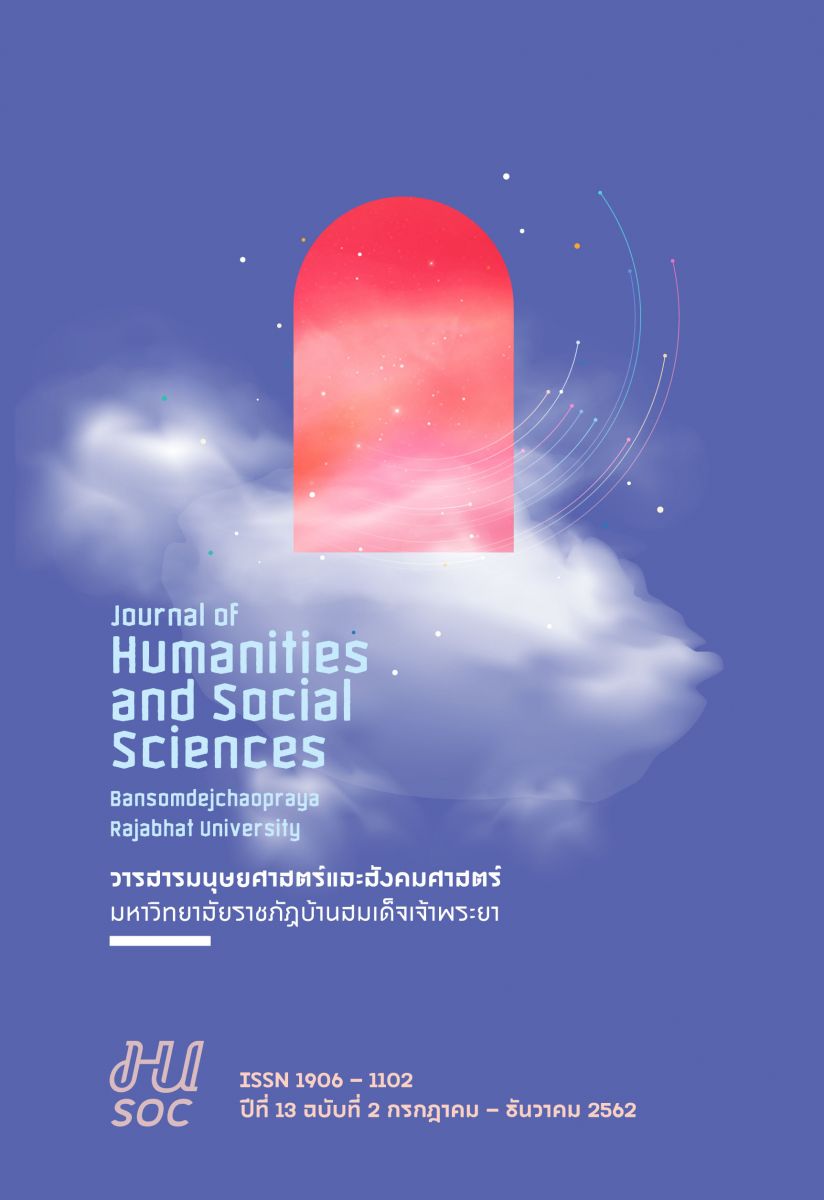Learning Management for Thai as a Second Language: Greetings
Keywords:
Experiential Learning, Greetings, Thai as a Second LanguageAbstract
Learning management is the capacity to design strategies that teachers can use to achieve learning outcomes for their students. Learning can be categorized under the cognitive domain (learning behaviors concerning intellectual ability), the psychomotor domain (learning behaviors concerning working ability), and the affective domain (learning behaviors concerning mental ability). Learning management for Thai students as a second language differs from that for Thais as the first language. First language learning comprises active learning by imitating people close to the learner in the environment, before actual study to school to learn more about the language, while second language learning is usually passive through formed instruction, teaching and explanation. The main objective of learning Thai as a second language is usually to communicate with Thai native speakers. It is necessary for the teacher to design the scope of the lesson plans for learners to achieve particular communicative abilities. Learning management can start by teaching simple conversations that provide opportunities for learners to immediately use phrases and sentences in class. For example, a lesson on greetings or Swatdi Khunkhru, with simulations and role-plays offers experiential learning that provides students with practical experience in using the Thai language, and enables them to use the language during extracurricular activities.
References
กองวิเทศสัมพันธ์ ทบวงมหาวิทยาลัย. (2544). การสัมมนาระดับภูมิภาคว่าด้วยการเรียนการสอนภาษาไทยในบริบทไทยศึกษา. กรุงเทพฯ : สำนักงานปลัดทบวงมหาวิทยาลัย โรงพิมพ์แห่งจุฬาลงกรณ์มหาวิทยาลัย.
จอมขวัญ สุทธินนท์. (2562). การจัดการเรียนรู้ภาษาไทยเรื่อง “นี่อะไร” สำหรับผู้เรียนชาวจีน ของมหาวิทยาลัยสงขลานครินทร์ วิทยาเขตหาดใหญ่ ปีการศึกษา 2560-2561. ว.สหวิทยาการสังคมศาสตร์และการสื่อสาร. 2(2), 130-143.
นิสา ศักดิ์เดชยนต์ ยุพา ส่งศิริ และใจเอื้อ บูรณะสมบัติ. (2526). ภาษาศาสตร์สำหรับครู. กรุงเทพฯ : อักษรไทย.
พรพิไล เลิศวิชา. (2557). แผนการสอนภาษาไทยประถมศึกษาตอนต้น. เชียงใหม่ : ธารปัญญา.
พิชานัน เพ็งลี. (2553). แบบเรียนสนทนาภาษาไทยสำหรับเด็กชาวต่างชาติระดับประถมศึกษา. วิทยานิพนธ์ศิลปศาสตรมหาบัณฑิต สาขาวิชาการสอนภาษาไทยในฐานะภาษาต่างประเทศ มหาวิทยาลัยศรีนครินทรวิโรฒ.
วัฒนาพร ระงับทุกข์. (2542). แผนการสอนที่เน้นผู้เรียนเป็นศูนย์กลาง. (พิมพ์ครั้งที่ 2). กรุงเทพฯ : คอมพิวเตอร์กราฟฟิค.
วีระพงศ์ มีสถาน. (2560). เอกสารประกอบการอบรมเทคนิคการสอนภาษาไทยให้ชาวต่างชาติ รุ่นที่ 11. นครปฐม : สถาบันวิจัยภาษาและวัฒนธรรมเอเชีย มหาวิทยาลัยมหิดล.
เวชฤทธิ์ อังกนะภัทรขจร. (2552, มิถุนายน – กันยายน). การจัดการเรียนรู้แบบบูรณาการ. ว.ศึกษาศาสตร์. 20 (3), 1-12.
สุจริตลักษณ์ ดีผดุง. (2552). วัจนปฏิบัติศาสตร์เบื้องต้น. (พิมพ์ครั้งที่ 2). กรุงเทพฯ : โรงพิมพ์สามลดา.
สุรีย์วรรณ เสถียรสุคนธ์. (2554, มกราคม - มิถุนายน). การสอนภาษาไทยให้แก่นักศึกษาชาวจีน: สภาพ ปัญหา และแนวทางการแก้ไข. ว.มนุษยศาสตร์. 18 (1), 127-140.
Downloads
Published
How to Cite
Issue
Section
License
Copyright (c) 2019 Faculty of Humanities and Social Sciences Bansomdejchaopraya Rajabhat University

This work is licensed under a Creative Commons Attribution-NonCommercial-NoDerivatives 4.0 International License.



